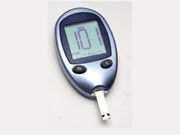Only diabetes and baseline hemoglobin A1c are significantly associated with DSP
WEDNESDAY, March 16, 2016 (HealthDay News) — Distal symmetric polyneuropathy (DSP) prevalence increases with an increasing number of components of metabolic syndrome, according to a study published online March 10 in Diabetes Care.
Brian C. Callaghan, M.D., from the University of Michigan in Ann Arbor, and colleagues determined the prevalence of symptomatic DSP in the prospective Health, Aging, and Body Composition Study, stratified by glycemic status and the number of additional metabolic syndrome components. DSP was defined as neuropathic symptoms plus one or more of three confirmatory tests (heavy monofilament, peroneal conduction velocity, and vibration threshold).
The researchers found that 21.0 percent of the 2,382 participants with neuropathy measures had diabetes, 29.9 percent had prediabetes, 52.8 percent had metabolic syndrome, and 11.1 percent had DSP. Stratified by glycemic status, as the number of components of metabolic syndrome increased there was an increase in DSP prevalence (P = 0.03). The only metabolic syndrome measures significantly associated with DSP were diabetes (cross-sectional model: odds ratio, 1.65) and baseline hemoglobin A1c (longitudinal model: odds ratio, 1.42). Significant associations with multiple secondary neuropathy outcomes were seen for waist circumference and high-density lipoprotein.
“Independent of glycemic status, symptomatic DSP is more common in those with additional metabolic syndrome components,” the authors write. “However, the issue of which metabolic syndrome components drive this association, in addition to hyperglycemia, remains unclear.”
One author disclosed financial ties to the medical device industry.
Copyright © 2016 HealthDay. All rights reserved.








